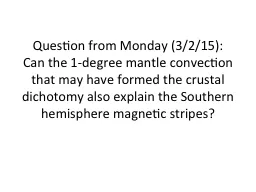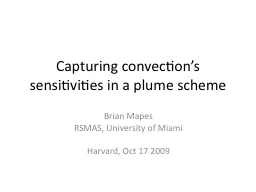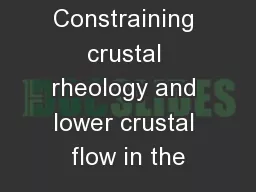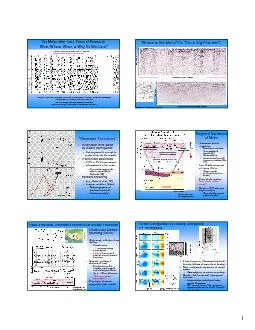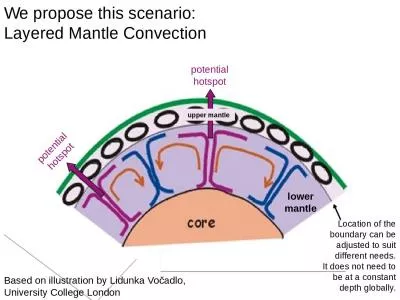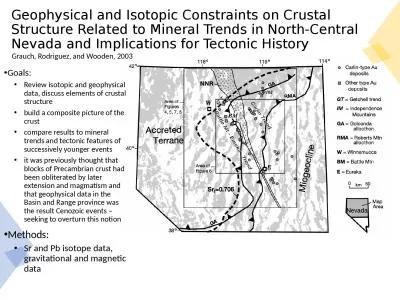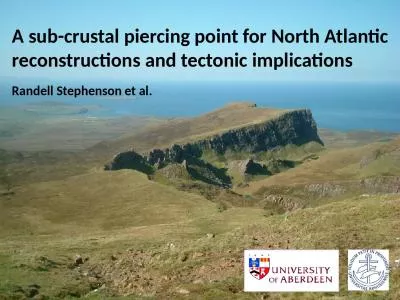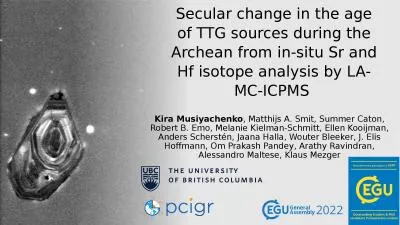PPT-Question from Monday (3/2/15): Can the 1-degree mantle convection that may have formed
Author : calandra-battersby | Published Date : 2018-03-23
Keller and Tackley 2009 Towards selfconsistent modeling of the martian dichotomy The influence of oneridge convection on crustal thickness distribution Icarus
Presentation Embed Code
Download Presentation
Download Presentation The PPT/PDF document "Question from Monday (3/2/15): Can the 1..." is the property of its rightful owner. Permission is granted to download and print the materials on this website for personal, non-commercial use only, and to display it on your personal computer provided you do not modify the materials and that you retain all copyright notices contained in the materials. By downloading content from our website, you accept the terms of this agreement.
Question from Monday (3/2/15): Can the 1-degree mantle convection that may have formed: Transcript
Download Rules Of Document
"Question from Monday (3/2/15): Can the 1-degree mantle convection that may have formed"The content belongs to its owner. You may download and print it for personal use, without modification, and keep all copyright notices. By downloading, you agree to these terms.
Related Documents

